Name Terry Fox Yard number 803579 Launched 1983 Draft 8.3 m Endurance 1.9 months | Namesake Terry Fox Commissioned 1 November 1991 Length 88 m Beam 18 m Builder Burrard Dry Dock | |
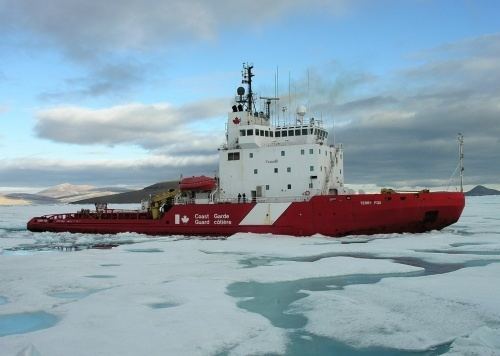 | ||
Ccgs terry fox assisting louis s st laurent
CCGS Terry Fox is a Canadian Coast Guard Heavy Gulf (and Arctic) icebreaker. The ship entered service in 1991 under lease and was purchased outright in 1993. Terry Fox is currently in service and is assigned CCG Base St. John's, Newfoundland and Labrador, responsible for the Newfoundland and Labrador Region.
Contents
- Ccgs terry fox assisting louis s st laurent
- Ccgs terry fox 15 aug 2015
- Design and description
- History
- References
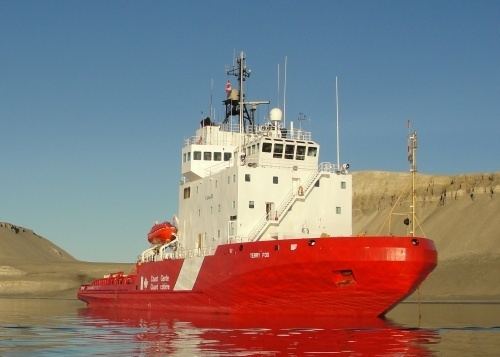
Ccgs terry fox 15 aug 2015
Design and description
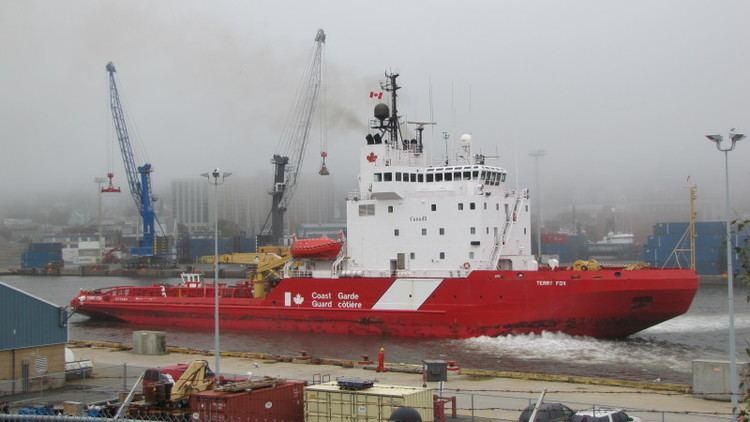
Designed to escort tankers through ice as a heavy icebreaker, Terry Fox and her sisters were designed to act as heavy tugs and supply vessels to support offshore oil rig platforms in a hostile environment. They bow is spoon-shaped, which allows the ship to ride up on the ice, making it easier to break it. Terry Fox, as a heavy icebreaker, is certified as Arctic Class 4. This allows the vessel to press through ice up to 1.8 metres (6 ft) thick. The ship has a displacement of 7,100 long tons (7,200 t) fully loaded, a gross tonnage (GT) of 4,233 and a net tonnage (NT) of 1,955. Terry Fox measures 88 metres (288 ft 9 in) long overall with a beam of 17.9 metres (58 ft 9 in) and a draught of 8.3 metres (27 ft 3 in). The ship is equipped with two Raccal Decca ARPA and one Furuno 1411 navigational radar.
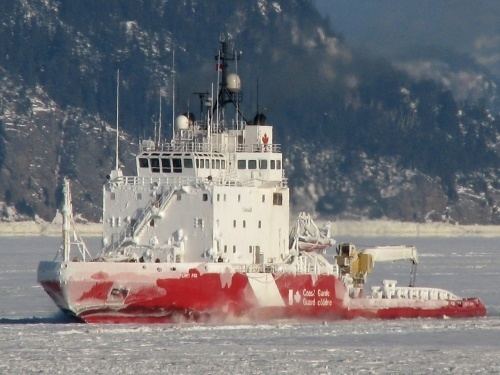
The ship is powered by four Stork-Werkspoor 8TM410 diesel engines driving two shafts creating 17,300 kilowatts (23,200 bhp). The vessel is controlled by controllable pitch propellers and a bow and stern thruster. The ship is also equipped with a single Caterpillar 3406 emergency generator. This gives Terry Fox a maximum speed of 16 knots (30 km/h; 18 mph) and with a storage for 1,919.0 m3 (67,770 cu ft) of diesel fuel, a range of 1,920 nautical miles (3,560 km; 2,210 mi) at 15 knots (28 km/h; 17 mph).
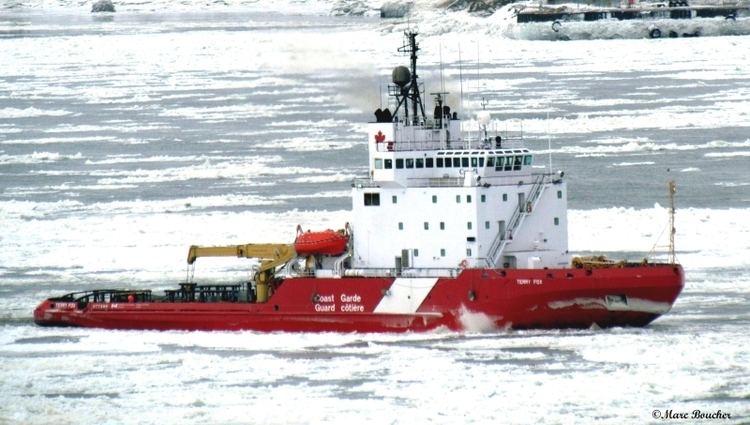
Terry Fox is also a supply tug and has one hold, with a capacity of 490.0 m3 (17,300 cu ft). The ship also carries a 1.5-kilometre (0.93 mi) tow rope. The vessel has a complement of 10 officers and 13 crew.
History

Named after the late cancer research activist Terry Fox, the vessel was constructed as MV Terry Fox by Burrard Yarrows Corporation at their yard in North Vancouver, British Columbia for Gulf Canada. The ship was launched on 23 April 1983 with the yard number 107. One of six ships of the same design, Terry Fox, along with her sister ship MV Arctic Kalvik supported Gulf Canada's operations in the Beaufort Sea during the 1980s. After diminishing need in the Beaufort Sea, only Terry Fox and Arctic Kalvik were kept by Gulf Canada, the other four vessels of similar design sold off to international buyers.
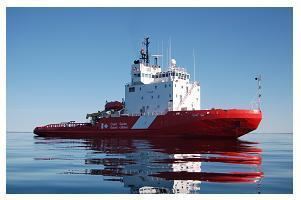
Terry Fox was leased for two years by the Canadian Coast Guard from Gulf Canada on 1 November 1991 during the conversion of CCGS Louis S. St-Laurent. Terry Fox was purchased on 1 November 1993. Filling the Canadian Coast Guard's need satisfactorily, the ship was purchased to replace CCGS John A. MacDonald. The ship's port of registry is Ottawa, Ontario, though its homeport is St. John's, Newfoundland and Labrador, stationed at CCG Base Southside. The icebreaker operates in the Gulf of St. Lawrence during the winter ice season and in Canada's eastern Arctic during the summer shipping season, assisting in escorting the annual Arctic summer sealift to coastal communities. The vessel was transferred from the CCG Base Dartmouth in Dartmouth, Nova Scotia on 1 April 2008.
In 2014, Terry Fox and Louis S. St-Laurent travelled to the Canadian Arctic to map the undersea continental shelf. They were hampered by thick sea ice conditions. In August, they became the first Canadian government ships to reach the North Pole in 20 years. In 2015, after performing escort duties for the sealift missions to Northern Canadian communities, Terry Fox was rerouted on short notice to a United Nations Convention on the Law of the Sea mission with Louis S. St-Laurent. CCGS Amundsen was redirected to take up Terry Fox's duties.
Terry Fox is scheduled for decommissioning in 2020, but will delayed until CCGS John G. Diefenbaker is commissioned.
